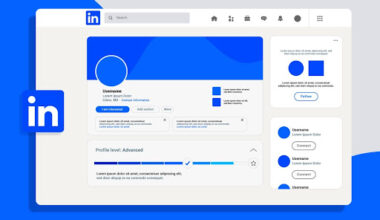Effective custom software development relies on organized workflows and the right project management (PM) tools. Modern teams use specialized software to plan tasks, track progress, and collaborate. About 77% of high-performing teams use PM software to stay on schedule and budget. These tools range from simple to-do lists to full-featured agile suites. Whether it’s sprint planning, Kanban boards, or time tracking, the best tools let you visualize work, automate processes, and keep everyone in sync.
Popular project management tools include Trello, Asana, Jira, ClickUp, and many others. Each has strengths for different workflows. For example, Jira (by Atlassian) is purpose-built for software teams and agile development: it breaks complex projects into sprints and tracks issues with rich integrations. Trello, another Atlassian product, uses a simple Kanban board interface ideal for smaller teams or individual project tracking. Asana offers flexible task lists and timelines suited to general team collaboration. Meanwhile, ClickUp bills itself as an “all-in-one” workspace with tasks, docs, automations, and goals built in. Other tools like monday.com and Wrike excel with visual dashboards and spreadsheet-like views. Additionally, software-focused platforms such as GitHub Projects, GitLab Issue Boards, and Azure DevOps integrate task tracking directly with code repositories. These tools range from free (Jira’s free tier up to 10 users, or Trello’s unlimited boards) to enterprise suites (Asana, Jira, and Microsoft Project). Selecting the right tool often means matching its features Kanban boards, Gantt charts, time tracking, or Agile templates, to your team’s workflow.
Key project management tools for custom software include:
- Jira: A comprehensive Agile project tracker, especially for development teams. Jira supports Scrum and Kanban boards, backlog management, user stories, and sprint planning. It also offers powerful reporting and integrates natively with other Atlassian products (Bitbucket, Confluence, etc.).
- Trello: A visual Kanban-style task board. Trello is easy to set up; teams manage work by moving cards through columns. It’s praised for its simplicity and drag-and-drop interface. It’s great for lightweight projects, content planning, or personal to-do lists.
- Asana: A flexible team-oriented platform with task lists and project timelines. Asana lets you organize work by team or goal, assign tasks, and track milestones. It offers rich integrations (Slack, Google Workspace, etc.) and features like “Goals” that align projects to strategy.
- ClickUp: An all-in-one work platform. ClickUp includes tasks, docs/wiki, chat, goals, and automations. It supports multiple views (list, board, Gantt, calendar) and custom statuses. Teams use it to consolidate different tools into one workspace.
- monday.com: A flexible “Work OS” platform. Monday offers customizable boards and templates for many workflows (development, marketing, operations). It features timelines, calendars, and automation recipes. It’s known for a friendly interface and strong team collaboration.
- Wrike: A robust tool for cross-functional collaboration and analytics. Wrike provides Gantt charts, workload views, and automated workflows. It suits teams that need detailed reports and scalable processes.
- GitHub Projects/GitLab: Built into developer platforms, these provide issue tracking and Kanban boards linked to repositories. Developers manage bugs and feature tickets in the same environment as code, enabling seamless workflow.
- Azure DevOps: Microsoft’s integrated suite (Repos, Pipelines, Boards). Azure Boards support Scrum/Kanban, with deep integration into Azure pipelines and Microsoft 365 tools.
- Confluence: A documentation and collaboration space (often paired with Jira). Confluence acts as a team knowledge base, ideal for specs, retrospectives, and wikis.
- Basecamp: A simple, all-in-one toolkit (message boards, to-dos, schedules) geared toward small teams. It emphasizes ease-of-use and transparent communication.
- Redmine: An open-source, free tracker. Redmine provides issue tracking, Gantt charts, and multiple project support. It’s customizable with plugins, but has a dated UI.
- Microsoft Project: A traditional project planner with strong Gantt and resource management. Best when already in the Microsoft ecosystem (Teams, SharePoint).
Comparison Table: Key Project Management Tools
| Tool | Best Suited For | Key Features & Integrations | Free Tier (notes) |
| Jira | Agile development teams | Scrum/Kanban boards, issue/bug tracking, customizable workflows, roadmaps, Slack/GitHub integrations. Rich reporting. | Free for up to 10 users. |
| Trello | Simple visual projects | Kanban board with lists & cards, drag-and-drop UI. Easy sharing and attachments. Hundreds of integrations (Google, Slack, etc.). | Unlimited boards (free plan). |
| Asana | General team task management | Task lists, timelines, workflows, Goals. Custom fields and project templates. Integrates with Slack, Outlook, GitHub, etc. | Free tier for teams (up to 15 users). |
| ClickUp | All-in-one workspace | Hierarchical tasks, docs, chat, automation, Gantt, Agile sprints. Vast customization. Integrations with Slack, Google Cal, etc. | Full feature set free for most users. |
| monday.com | Teams needing templates & visuals | Highly customizable boards, dashboards, time tracking, automation recipes. Good for marketing, dev, HR workflows. | Free for up to 2 seats. |
| Wrike | Cross-functional reporting | Gantt charts, work intelligence (AI suggestions), resource management, time logs. Strong analytics for large teams. | Free basic plan available. |
| GitHub Projects | Dev teams/code centric workflows | Integrated Kanban boards and issues tied to GitHub repos. Enables linking code commits to tasks. Collaborates via GitHub UI. | Free (with GitHub accounts). |
| Azure DevOps | Microsoft-centric teams | Agile boards, backlogs, built-in CI/CD pipelines, repos, artifacts. Deep MS365 integration. | Free basic plan (5 users). |
| Smartsheet | Spreadsheet-style PM | Grid/Gantt views like Excel, automated workflows, resource dashboards. Best for portfolio reporting. | Free trial available (paid after). |
| Basecamp | Small teams, simple projects | Message boards, to-dos, schedule, and docs in one place. Flat pricing by team size. Works well for client collaboration. | Free (limited), flat pricing. |
| Notion | Knowledge & planning | All-in-one docs, databases, and Kanban. Build wikis, roadmaps, roadmapping templates. Integrates loosely via APIs. | Free personal plan. |
| Redmine | Open-source/tech-savvy teams | Issue tracking, Gantt, forums, wiki. Highly customizable (per-project wikis, LDAP support). No native automation or modern UI. | Free (self-hosted). |
| Microsoft Project | Detailed planning (enterprises) | Complex scheduling, resource leveling, time/phased costs. Gantt, baselines, and Office integration (Teams, SharePoint). | Subscription (no free plan). |
These examples illustrate that no single tool fits all projects. A development workflow often combines multiple tools (e.g. Jira for issues, Confluence for docs, Slack for chat). For custom software, Agile-friendly features are key: sprint planning, backlog grooming, and flexible boards.
Tools Overview
Project management tools come in many forms, but most modern software teams look for similar capabilities. At minimum, a good tool lets you create and assign tasks, update statuses, and visualize progress. Teams often prioritize:
- Agile support: Scrum and Kanban boards, backlog management, sprint planning. Top tools like Jira, Azure Boards, and Shortcut (formerly Clubhouse) support these frameworks out of the box.
- Task tracking: Detailed tickets or tasks with descriptions, due dates, and attachments. Tools vary in how richly tasks are tracked (e.g. ClickUp’s custom fields vs. Trello’s simple cards).
- Collaboration: Comment threads, file sharing, notifications. Real-time chat (e.g. Slack) and comments in the PM tool keep everyone aligned.
- Workflow customization: Ability to tailor statuses, fields, and templates to your project type. Custom workflows are essential for specialized development processes.
- Reporting & analytics: Dashboards and reports to track progress, velocity, and risks. Tools like Jira and Wrike provide burndown charts and time analytics.
- Integration: Since software development relies on code repos and CI/CD, integration with GitHub/GitLab, Jenkins, etc., is important.
- Flexibility: Features like multiple project views (list, board, timeline) accommodate different user preferences.
Popular tools and their niches include Jira (agile dev), Trello (visual Kanban), Asana (general tasks), ClickUp (all-in-one), monday.com (custom dashboards), Wrike/Smartsheet (analytics/enterprise), GitHub/GitLab (code-centric), and Basecamp (simple teams). Open-source alternatives like Redmine or Taiga may suit cost-conscious teams.
Developers often ask: “Which tools help manage software development?” Common answers are Trello, Asana, and Jira. These platforms include all the basic task management features developers need: task boards, issue tickets, sprint tracking, and collaboration. For example, Trello’s card-based Kanban is a popular way to visualize development tasks and workflows. Jira, on the other hand, is widely used in engineering because it supports detailed issue tracking and Scrum processes. Asana and ClickUp are also frequently chosen for their flexibility and visual clarity.
High-Level Feature Comparison
This table is not exhaustive but highlights each tool’s main strengths. For a more granular view, consider your team size, methodology (Scrum, Kanban, etc.), and existing tech stack.
| Tool | Agile Boards | Gantt/ Timeline | Time Tracking | Integrations | Notes |
| Jira | Yes | Yes (via plugins) | Limited (plugins/add-ons) | Slack, GitHub, Jenkins, Confluence | Strong dev/issue features, steep learning curve |
| Trello | Yes (simple) | No | No (via Power-Ups) | Google Drive, Slack, GitHub, etc. | Very easy to use Kanban, best for small/simple projects |
| Asana | No (Lists/Boards) | Yes (Timeline) | Basic timesheets (via add-on) | Slack, Dropbox, GitHub, Teams | Visually appealing, good for cross functional teams |
| ClickUp | Yes (advanced) | Yes (Gantt) | Yes (native) | Slack, Google Cal, Outlook, GitHub | Highly customizable, one tool for all needs |
| monday.com | Yes (flexible) | Yes (Timeline) | Yes | Slack, GitHub, Zoom | User-friendly, template-driven |
| Wrike | Yes | Yes | Yes | Slack, Salesforce, MS Apps | Data-rich analytics, for larger teams |
| GitHub/GitLab | Yes (Basic Kanban) | No | No (Limited native) | Git repositories | Issue tracking tied to code, ideal for dev-centric flow |
| Azure DevOps | Yes | Yes | Yes | MS Teams, GitHub, Azure services | Built for DevOps pipelines & Microsoft shops |
| Smartsheet | Yes (Grid view) | Yes (Gantt) | Yes | Slack, Jira, Salesforce | Spreadsheet-like interface |
| Basecamp | No (To-dos only) | No | No | Email, Ta-da | Emphasizes simplicity and messaging |
| Notion | Yes (Boards) | Yes (Timeline) | No | GitHub (via Zapier) | All-in-one docs+tasks, lightweight |
| Microsoft Project | Yes (Waterfall) | Yes (Gantt) | Yes | Teams, Outlook, SharePoint | Enterprise planning, steep learning curve |
| Redmine | Yes | Yes | No | SVN, Git (via plugins) | Free, open-source, self-hosted |
This comparison shows trade-offs. For instance, Jira excels at issue tracking but can be complex for non-tech teams, while Trello is intuitive but lacks built-in analytics. Evaluate each tool’s strengths against your project’s needs and team preferences.
Setup and Best Practices
Once you pick a tool (or tools), proper setup is key. Here are some recommended practices for configuring and using PM tools effectively:
- Define Your Workflow: Before adding tasks, outline the project phases (e.g. Backlog -> To Do -> In Progress -> Review -> Done). Configure the tool’s workflow states to match your process. For agile projects, use built-in Scrum or Kanban templates (most tools like Jira and Azure DevOps have these ready). Clear workflow steps ensure everyone knows how work flows through the system.
- Organize Tasks: Break down the project into Epics, Stories, and Tasks (or equivalent hierarchy) so work is granular. Assign each task to a team member, with due dates and priorities. Utilize features like subtasks or epics for large features. For example, Jira allows creating a Product Backlog of user stories and mapping them into sprints. This lets you continually refine and prioritize work.
- Use Custom Fields and Labels: Tailor the tool to your project by adding relevant fields (e.g. severity, component, sprint, etc.). Labels or tags (available in tools like Trello, Asana, ClickUp) help categorize tasks by feature, client, or risk level. This metadata enables better filtering, searching, and reporting later on.
- Automate Routine Work: Take advantage of automation features. Many tools allow you to automate repetitive tasks (e.g. assigning issues when moved to a new column, sending notifications, or updating statuses). Jira’s Automation engine and ClickUp’s automation templates can reduce manual updates. Set up alerts or triggers so nothing slips through the cracks.
- Integrate with Other Tools: Connect your PM tool to development and communication tools. Link commits and branches (GitHub/GitLab) to tasks so code changes are traced to tickets. Integrate Slack or Teams for real-time notifications on task updates. For example, Jira and ClickUp both integrate with Slack to push updates on ticket status. These integrations centralize work.
- Maintain Documentation: Use wikis or shared docs alongside your PM tool. Confluence (with Jira) or the wiki/notes feature in ClickUp/Asana ensures requirements, designs, and retrospectives are recorded. This preserves project knowledge. For example, Atlassian notes that Confluence serves as a “central source of truth” for scrum teams.
- Regularly Groom the Backlog: Schedule periodic backlog review sessions. Remove outdated tasks, estimate effort, and reprioritize items as requirements change. In tools like Jira, use the backlog view to drag-and-drop stories into sprints. Keeping the backlog clean prevents confusion and ensures the next sprint has well-defined work.
- Set Up Dashboards and Reports: Create or customize dashboards for stakeholders and the team. Include charts like sprint burndown, cumulative flow diagrams, or workload views. Most PM tools offer built-in or plugin reports. For instance, Jira dashboards can display live sprint stats, while Wrike offers real-time analytics. Regular review of these reports helps identify bottlenecks early.
- Train the Team: Ensure everyone knows how to use the tool. Provide a quick onboarding session or cheat sheet on how tasks should be created, updated, and closed. Emphasize the importance of keeping statuses up-to-date. The smoother everyone can interact with the tool, the more data you’ll have to manage progress.
- Enforce Discipline: Use required fields (e.g. assignee, due date) to avoid missing information. Make it a team habit to comment on task updates, log work hours, and resolve or reopen tickets as needed. Consistency in usage means reliable reporting and fewer lost tasks.
- Iterate on Process: After each project or release, hold a retrospective on tool usage. Was the setup effective? Did any workflows need refinement? Use insights (from your tool’s analytics or team feedback) to adjust templates and practices for next time.
These best practices leverage the strengths of modern PM software. By combining clear processes with the tool’s capabilities like Agile boards, automatic notifications, and thorough documentation teams can greatly improve transparency and efficiency. For example, configuring Jira with Scrum templates and automations helped many teams streamline sprint planning. Similarly, using Trello or Notion for daily standups and task lists can enhance collaboration. The goal is to make the tool fit your custom workflow, rather than the other way around.
Conclusion: Applying These Tools
In summary, managing a custom software project effectively means choosing tools that align with your methodology and then setting them up thoughtfully. We’ve seen that Jira, Trello, Asana, ClickUp, and others each offer unique advantages. The best approach is often a blend: use a robust tool for issue tracking (like Jira) together with lightweight boards (like Trello) or docs (like Confluence/Notion) as needed. Always focus on workflows: break down tasks, keep priorities visible, and leverage automation and integrations to reduce manual effort.
At Empyreal Infotech, we apply these principles in every custom development project. We choose tools based on the project size and team, configure them to support our Agile sprints, and integrate them deeply into our workflow. By doing so, Empyreal ensures projects stay on track and clients stay informed. Learn more about Empyreal Infotech’s approach and how we use modern project management tools on our website or contact us for a consultation.







